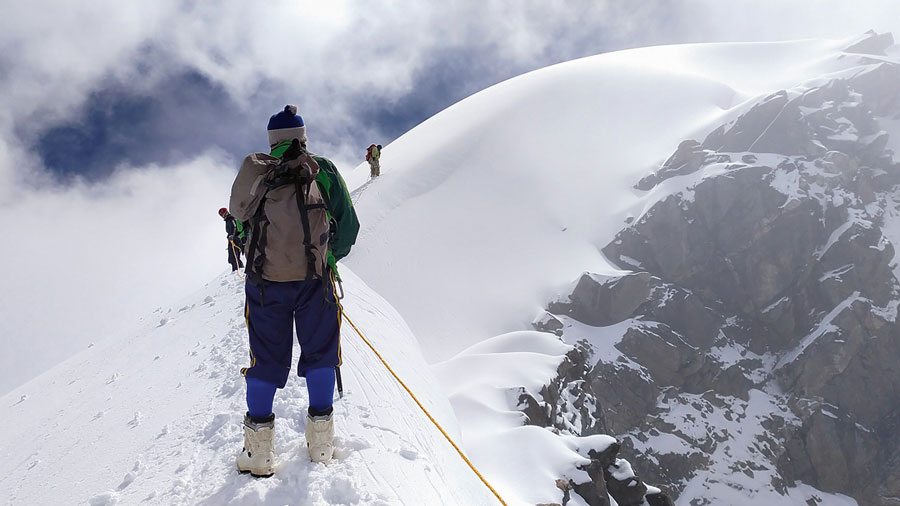It had been a good two years since the members of the Tour Cultural Society and Travello (TCST), a mountaineering club in Kolkata, had been on a summit expedition. Their last one had been around August-September 2019, to Himachal Pradesh. That was well before the world had heard of Covid. Then, after the horrendous second wave had ended, the adventure lovers planned their next one, to summit the 5,645m Mt Bhanoti in the Kumaon Himalayas of Uttarakhand.
Thus, on September 18, 2021, a TCST team of 14 led by Parijat Samanta set off for Kathgodam by the Bagh Express. Arriving early next morning, they set off by bus for Bageshwar, which they reached by mid-afternoon. Over the next
10-odd days or so, they would be travelling in areas where the biggest human habitations they would come across would be tiny mountain villages.
At Bageshwar, they would spend the rest of the day picking up supplies, primarily food stuff, that they would need for the rest of the trip since not much was likely to be available further on. It was also where they would meet their guides and porters who would travel with them on the trip.
The next leg of the journey would be by smaller Jeep-type vehicles to the village of Kharkiya. That is where the motorable road ended and even this stretch was a challenge since it had broken in parts.
The porters had arrived at this point with mules and the expedition team headed for Jakuni village, arriving in late afternoon even though the weather had turned bad. The following is the pictorial account of the journey from this point onwards as narrated by Sudip Roy, a member of the expedition.
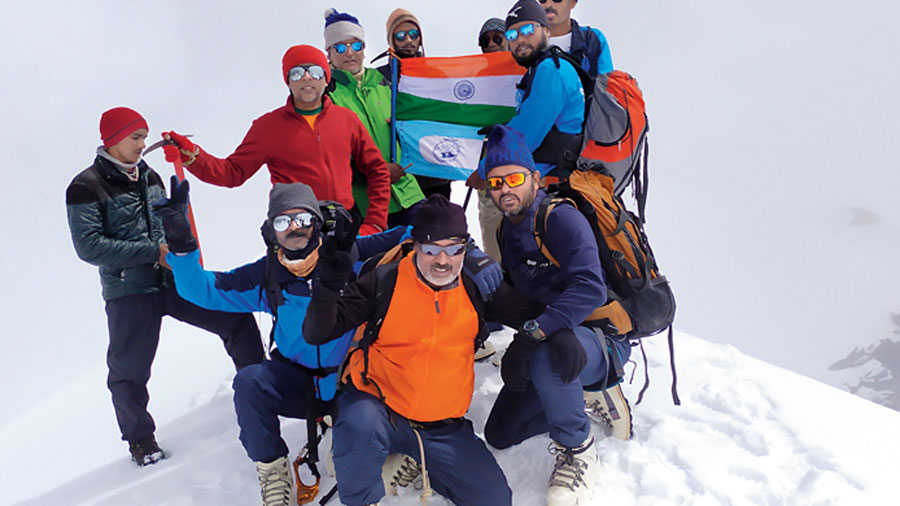
The regulation group snap at the top
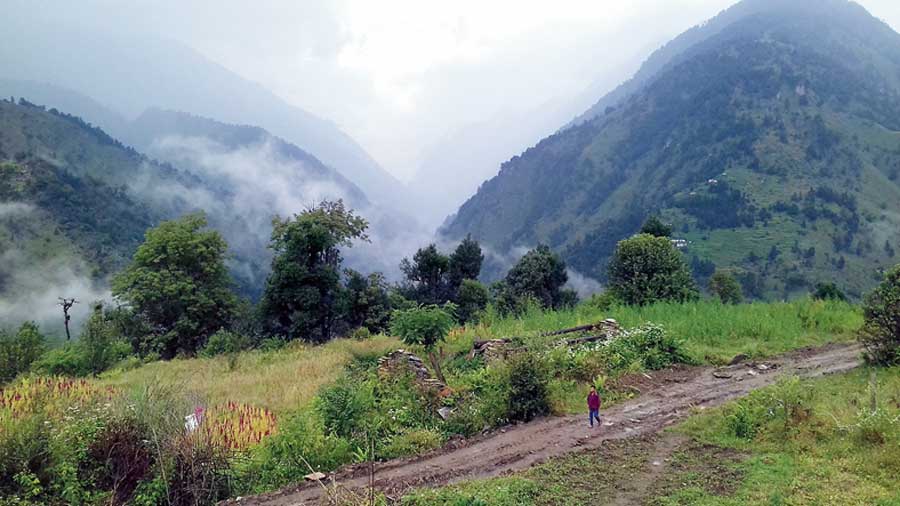
The way to Jakuni village was a typical mountain trekking route. The weather had turned cloudy but there were fairly broad trails to follow. This is effectively from where the real story of what we had travelled for began.
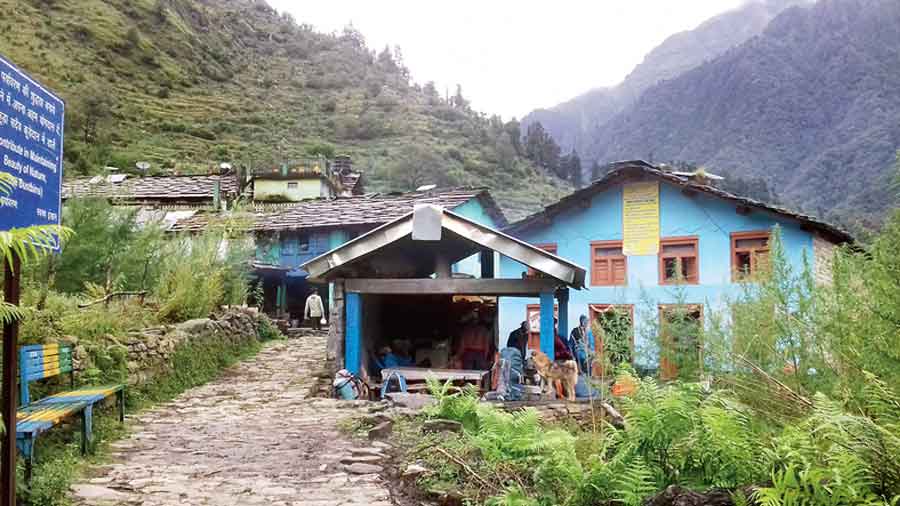
Next day we started walking again heading for Jatoli village down a mountain road. A motorable road is being built to Jatoli and maybe in future we will be able to drive there. But as of now it’s a journey on foot with only mules and porters. So the luggage was divided up between them.
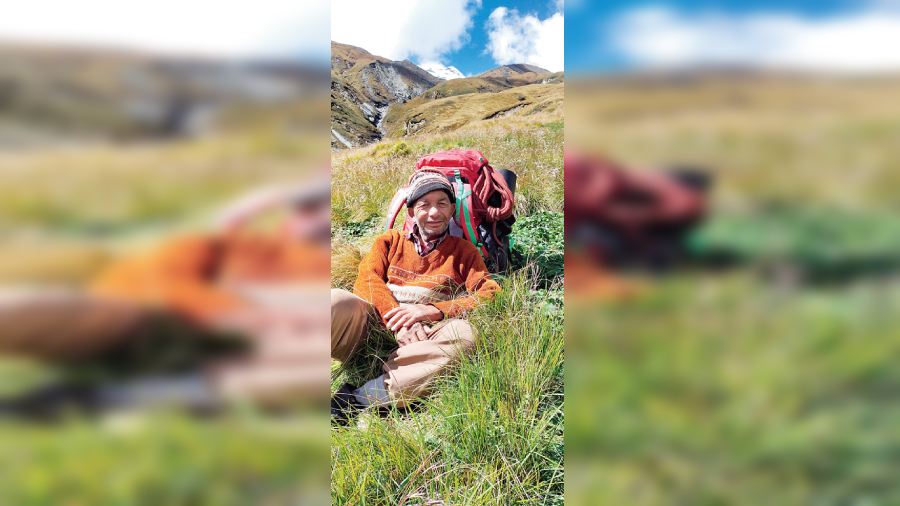
We needed a total of 18 porters. Our team was of 14 people, excluding our guide Rup Singh. In that region everyone knows him and he is like a God — he is extremely knowledgeable. while he is elderly now, he still works as a guide. He is from Jatoli village and we all stayed at his house on our night in his village.
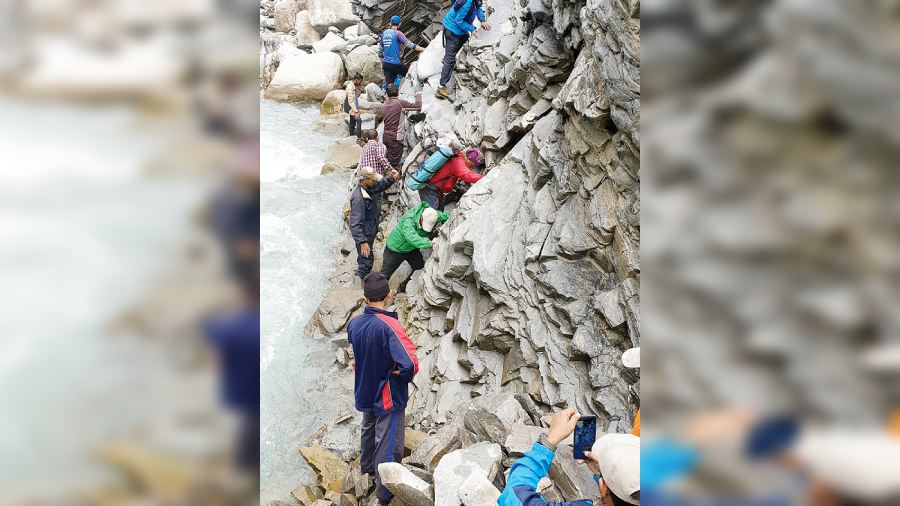
We left Jatoli the next day and headed for a place called Kathalia. And the road from Jatoli to Kathalia is very dangerous right now. For the last couple of years there hasn’t been a team going there and parts have collapsed and there have been landslides. Sometimes we had to just cling to rock faces next to the river to get on with the journey and there were quite a few of those on this stretch. The road was so bad we need more porters since each of them could carry only 10kg while usually they can do much more than that. There were narrow stretches and steep mountainsides to negotiate. So the porters did not take the risk of carrying heavier loads. That evening we reached Kathalia.
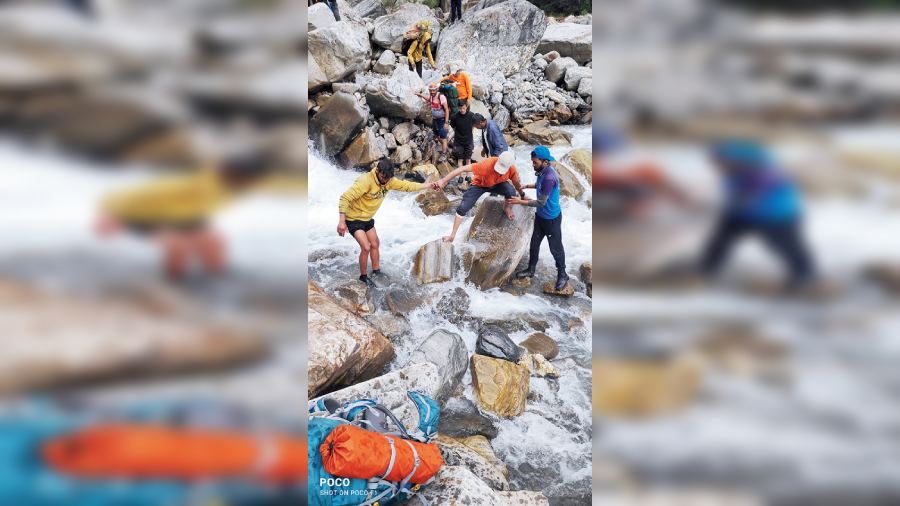
The next day we headed out to the Mount Bhanoti base camp. Due to heavy rainfall, we had to negotiate debris, sometimes with the use of ropes we climbed up and down, crawled and crossed the Sunderdunga river as well. Rocks and mud make a horrible mixture. It was a six-seven-hour trek.

We used to trek for six to seven hours each day. The porters unloaded all the luggage at the base camp and made their way back to Jatoli. The porters are given a date when the expedition would return to the base camp and they would return to carry the luggage back down again.
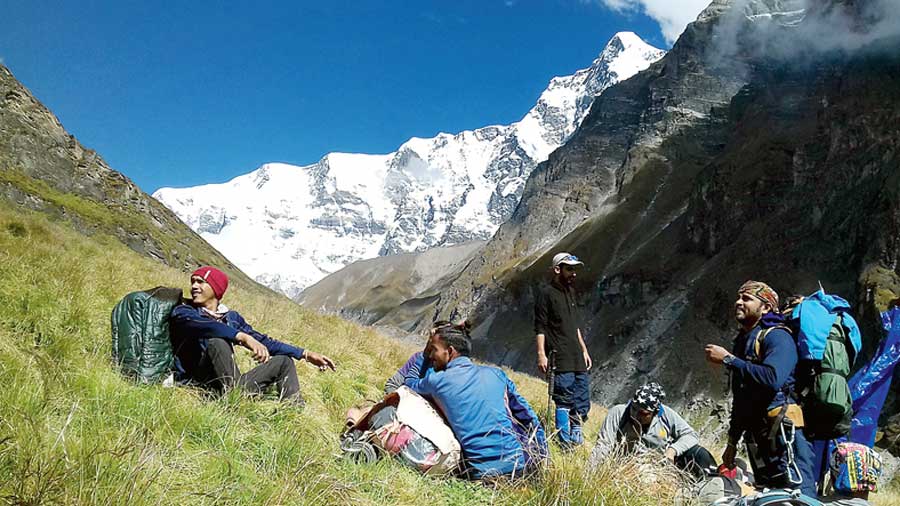
Upwards from the base camp, the mountaineers have to ferry the load. One day they would carry some of the stuff up to Camp 1 and return to the base camp and do the same thing the next day and so on to move to each higher camp. Lastly, the expedition members carry up their own belongings and establish the higher camp. We were supposed to set up two camps, but we did not since our Camp 1 was more or less where Camp 2 usually is. The march was a bit long, though. And that was our summit camp as well. For two days we ferried load up here. We occupied this camp on Day 3, and the day we did that the weather was really bad. We rested for bits along the way, as in the picture with Mt Maiktoli in the backdrop.

Finally, we set up summit camp .

The day we occupied summit camp, the weather was really bad. There was huge snowfall that night. It started at 1am and went on for three hours. We kept clearing the snow from the tent throughout the night. There was also heavy lightning and thunder and we were a little scared. Thankfully, the sky cleared up around dawn.
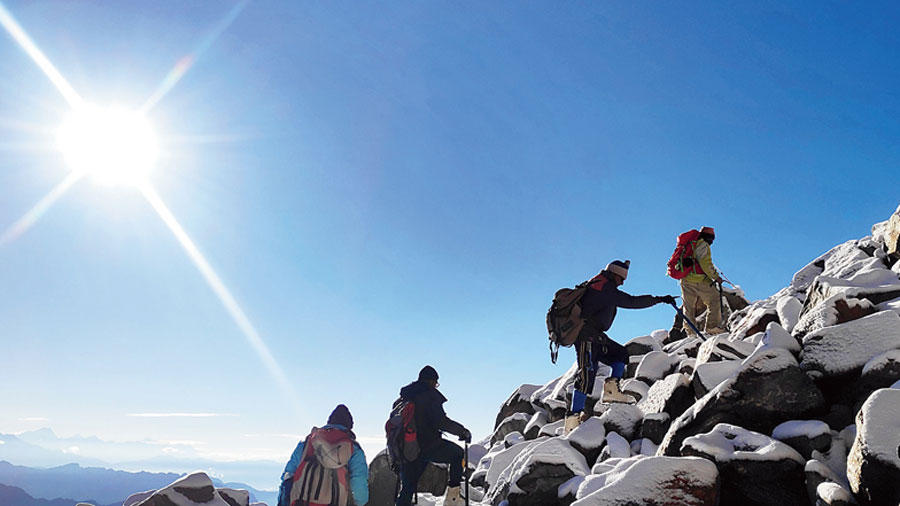
We headed for the summit the day after we reached the summit camp and we got good weather. Normally, one starts out around 2.30-3am, depending on how far the peak is and how much time it would take to get there, but because of the snowfall we had to wait until sunrise to leave because we wanted to see how the weather would be before making the push. We left around 6.30am and it was late afternoon when we returned. The first part of the summit trek was over moraine.
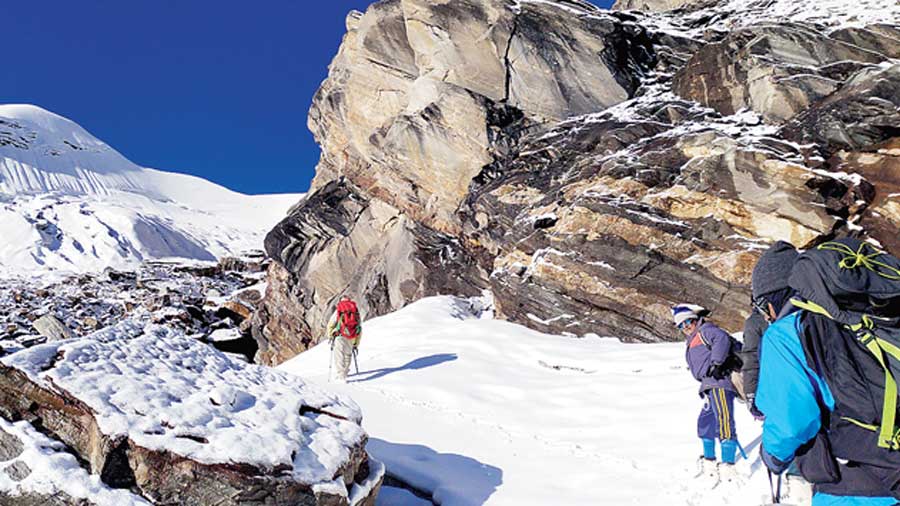
Next to the Bhanoti Peak is Durgakot Peak. Our route was just next to the wall of this peak. Then we reached the face of the Bhanoti Peak and fixed our rope on this face and did the climb. This was not the typical route. That is more to the left of this one but the condition of that wasn’t great when we went. We are not sure whether this is a new route, but we didn’t find any documentation of it. After doing the climb we figured that probably there hasn’t been a climb along this route before.
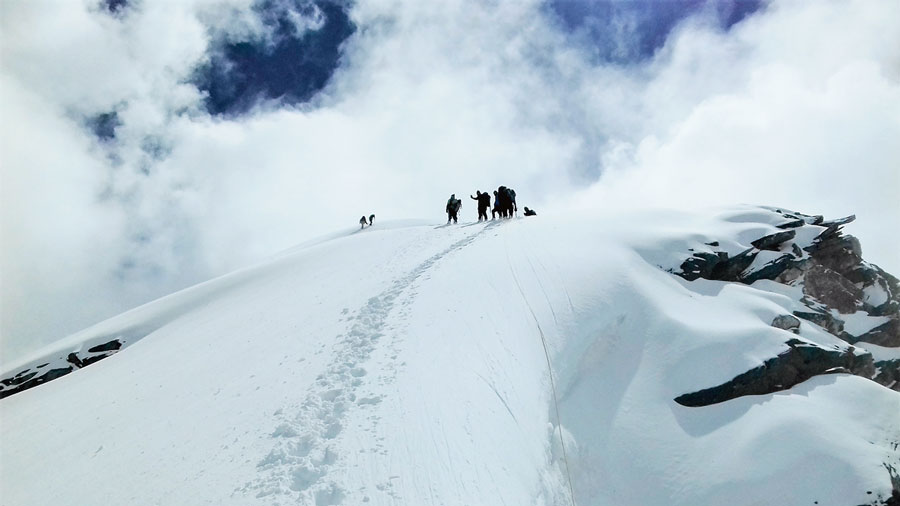
There are crevasses to be negotiated. We did not have to negotiate rock faces but because there had been snowfall the previous night we got a lot of soft snow , often knee deep in some places, and ice. So we did not get much of rock features. While that makes the climb a bit easier, if there is too much of snow there is also the risk of an avalanche.
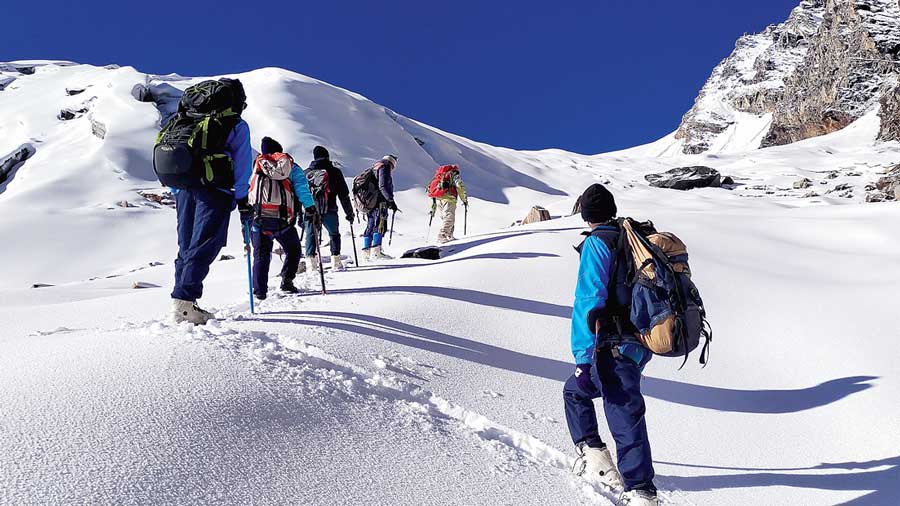
Besides, if there are crevasses, there is a chance that the snow would have covered and hidden it. We were a bit worried about that, but somehow we managed to negotiate those. And the rope had also been fixed so some of that risk was mitigated.

A happy bunch of mountaineers after the journey All Pictures by Sudip Roy
